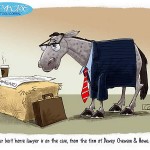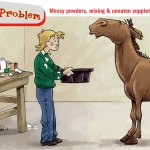
Sign Up for May 16 FREE Webinar
You may know that the Equine Activity Liability Act says that you “ride at your own risk.” However, liability protections do not apply to all causes of risk and all equine activities. A written liability release in any equine related activity is therefore essential for liability protection. A properly written and presented liability release provides advantages and protections not offered by the law. For example, a release provides an opportunity to receive, in writing, confirmation that the signer has read, understood, and agrees to accept the terms of your limitation liability policy. This alone may even deter the signer from filing a lawsuit.
A successfully written release includes a variety of essential elements including, but not limited to:
Parties: The parties to the release should be carefully identified.
Signature: The signature line should require the signer’s full name, address, and phone number. The signer should indicate if they are signing on their own behalf, or on behalf of their minor child, ward, heirs, representatives, and/or assigns. A minor signed release is not legally enforceable.
Risks: A description of some risks inherent in dealing with or around horses is recommended to further reaffirm those risks. The list must clearly indicate that the risks listed are merely a sampling and not intended to be an all-inclusive representation.
Waiver: This section expressly provides that the signers, on their own behalf, and/or on behalf of others, agree to waive any legal rights to sue for claims arising from their involvement in the equine related activity.
State’s Law: The enforceability of the release may differ depending on the applicable state law. Therefore, providing which state’s law applies explicitly in the release prevents a debate on that issue.
Equine Act: The release must include the WARNING notice exactly as it is stated in the applicable state’s Equine Activity Liability Act.
Specifics: Many releases include provisions specific to the drafter’s needs. For example, some releases ask for the rider’s prior riding experience, authorization for medical attention, agreement to wear a certified helmet, and the rider’s insurance information.
Continue reading Healthy Horse Tip – When Dealing with Horses – Get It in Writing








